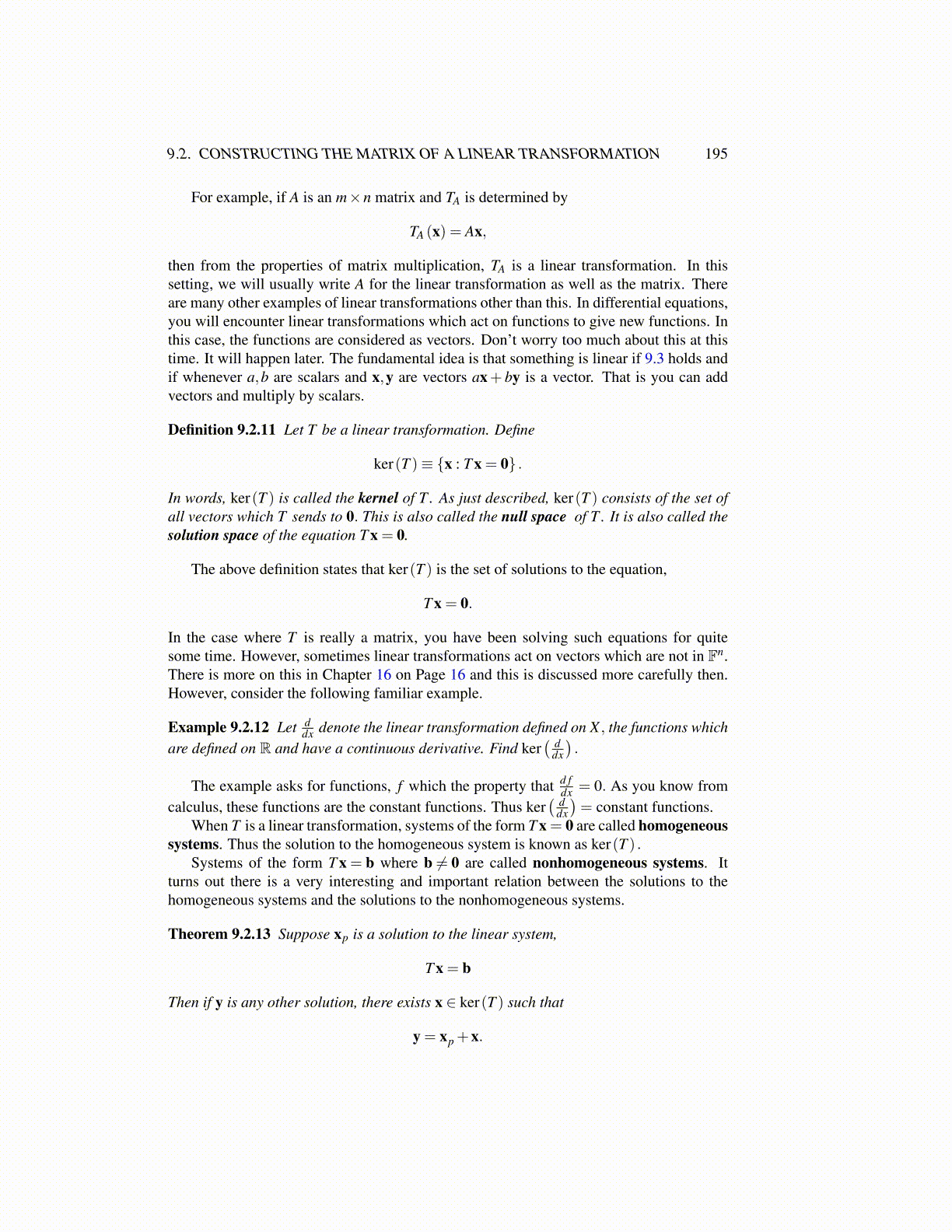
9.2. CONSTRUCTING THE MATRIX OF A LINEAR TRANSFORMATION 195
For example, if A is an m×n matrix and TA is determined by
TA (x) = Ax,
then from the properties of matrix multiplication, TA is a linear transformation. In thissetting, we will usually write A for the linear transformation as well as the matrix. Thereare many other examples of linear transformations other than this. In differential equations,you will encounter linear transformations which act on functions to give new functions. Inthis case, the functions are considered as vectors. Don’t worry too much about this at thistime. It will happen later. The fundamental idea is that something is linear if 9.3 holds andif whenever a,b are scalars and x,y are vectors ax+ by is a vector. That is you can addvectors and multiply by scalars.
Definition 9.2.11 Let T be a linear transformation. Define
ker(T )≡ {x : T x = 0} .
In words, ker(T ) is called the kernel of T . As just described, ker(T ) consists of the set ofall vectors which T sends to 0. This is also called the null space of T . It is also called thesolution space of the equation T x = 0.
The above definition states that ker(T ) is the set of solutions to the equation,
T x = 0.
In the case where T is really a matrix, you have been solving such equations for quitesome time. However, sometimes linear transformations act on vectors which are not in Fn.There is more on this in Chapter 16 on Page 16 and this is discussed more carefully then.However, consider the following familiar example.
Example 9.2.12 Let ddx denote the linear transformation defined on X , the functions which
are defined on R and have a continuous derivative. Find ker( d
dx
).
The example asks for functions, f which the property that d fdx = 0. As you know from
calculus, these functions are the constant functions. Thus ker( d
dx
)= constant functions.
When T is a linear transformation, systems of the form T x = 0 are called homogeneoussystems. Thus the solution to the homogeneous system is known as ker(T ) .
Systems of the form T x = b where b ̸= 0 are called nonhomogeneous systems. Itturns out there is a very interesting and important relation between the solutions to thehomogeneous systems and the solutions to the nonhomogeneous systems.
Theorem 9.2.13 Suppose xp is a solution to the linear system,
T x = b
Then if y is any other solution, there exists x ∈ ker(T ) such that
y = xp +x.